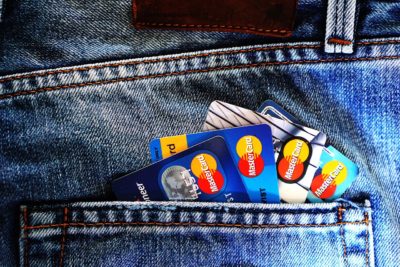
CO2 emissions from various means of payment

When we buy a product or a service, we have several choices to pay for it: mobile phone, bank card, bank transfer, cheque or cash for example. Each payment solution emits more or less CO2. Payment by bank card emits the least CO2, and payment by cash emits the most.
To help you know your CO2 emissions when you buy a product, here is the evaluation of the CO2 emissions of each payment method from the study carried out by Ernst & Young and Bio Intelligence Service, for the French banking federation.
How much CO2 do I emit when I pay by payment card?
Approximately 3g of CO2 for a payment at a merchant, and 4g of CO2 for a payment on the internet. This calculation takes into account all aspects related to card payments, i.e. the emissions are calculated over the entire life cycle of the payment. For example, the impacts of card manufacture (including the integrated circuit of the chips), the proportion of journeys made by car to distribute the card, the production of the "customer" and "merchant" paper tickets for the Electronic Payment Terminal (EPT), the use of the EPT and the data archiving servers (electricity consumption) are taken into account. For internet payments, the internet connection equipment (computers, tablets) is considered. The impacts are mainly associated with the manufacture of this equipment and its use, which consumes electricity.
On average, in 2014, each person made around 150 card payments per year, representing emissions of 525 grams of CO2. Half a kilo, in other words, nothing at all! It is the method of payment to promote. Moreover, in France, it is also the preferred method of payment for the French. That's good news!
How much CO2 I emit when I pay by cheque?
Approximately 15g of CO2, per cheque. As with payment cards, the calculation takes into account the entire life cycle of the payment. The environmental impacts of paying by cheque are mainly due to the production of paper and the proportion of journeys made by car to collect chequebooks and deposit cheques in branches.
In 2014, the French signed around 2.5 billion cheques (for an average value of 490 euros per cheque), representing emissions of 37,500 tonnes of CO2. These are the easiest emissions to eliminate: we can replace cheques to pay our friends or our sports club with a transfer from our mobile phone. Try it from your CO2 Account, it's made for this!
How much CO2 I emit when I pay in cash?
Ouch, ouch, ouch: about 22 g of CO2 for a payment of €40 made with €20 and €10 notes and €2, €1 and 50 cent coins. That's the worst payment ever! Emissions depend of course on the mix of coins and notes. The more coins there are, the more CO2 emissions there are.
The emissions of cash payments come mainly from the logistical steps involved in the circulation of cash (delivery and collection transport with cash trucks). Bitcoin is often criticized for its energy consumption, but frankly, there is nothing worse than paying with cash!
In 2014, the French made around 12.6 billion cash payments for an average amount of €120 per payment, which is around 66 grams of CO2 per payment, and a total of 833,000 tonnes of CO2 per year. If we add up the emissions linked to cheques, we are almost at 900,000 tonnes of CO2 per year, which we could round up to 1 million tonnes of CO2 to keep a simple order of magnitude in mind. 1 million per year, out of the 500 million that France emits each year, is still 0.2% of the country's carbon emissions.
So, although 66% of French people use cash as a priority or second choice, we can easily replace these obsolete methods of payment by paying from our mobile phone, with a CO2 Account for example....
This is a major argument for moving towards a cashless society. At the very least, banks could offset their CO2 emissions of this payment method.
CO2 Account promotes non-CO2 emitting payment methods
Compte CO2 is a green mobile neo-bank that only allows credit card and mobile-to-mobile payments, those that emit less CO2.
Compte CO2 is a bank account, dedicated to the fight against climate change, thanks to the new CO2 currency. All accounts are held in green-euro currency, rather than in euros. This currency only exists if we reduce our CO2 emissions.